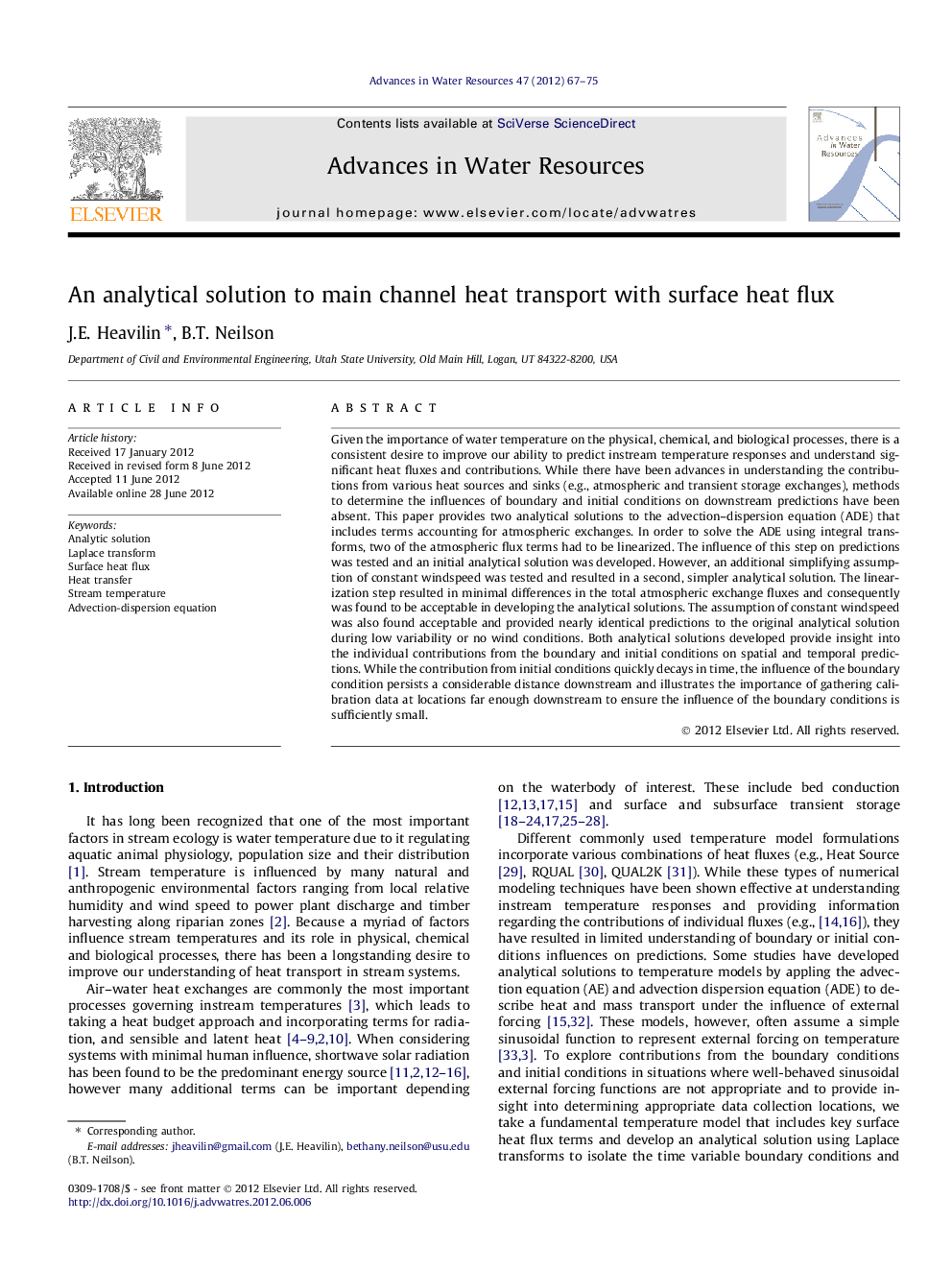| کد مقاله | کد نشریه | سال انتشار | مقاله انگلیسی | نسخه تمام متن |
|---|---|---|---|---|
| 4525875 | 1625661 | 2012 | 9 صفحه PDF | دانلود رایگان |

Given the importance of water temperature on the physical, chemical, and biological processes, there is a consistent desire to improve our ability to predict instream temperature responses and understand significant heat fluxes and contributions. While there have been advances in understanding the contributions from various heat sources and sinks (e.g., atmospheric and transient storage exchanges), methods to determine the influences of boundary and initial conditions on downstream predictions have been absent. This paper provides two analytical solutions to the advection–dispersion equation (ADE) that includes terms accounting for atmospheric exchanges. In order to solve the ADE using integral transforms, two of the atmospheric flux terms had to be linearized. The influence of this step on predictions was tested and an initial analytical solution was developed. However, an additional simplifying assumption of constant windspeed was tested and resulted in a second, simpler analytical solution. The linearization step resulted in minimal differences in the total atmospheric exchange fluxes and consequently was found to be acceptable in developing the analytical solutions. The assumption of constant windspeed was also found acceptable and provided nearly identical predictions to the original analytical solution during low variability or no wind conditions. Both analytical solutions developed provide insight into the individual contributions from the boundary and initial conditions on spatial and temporal predictions. While the contribution from initial conditions quickly decays in time, the influence of the boundary condition persists a considerable distance downstream and illustrates the importance of gathering calibration data at locations far enough downstream to ensure the influence of the boundary conditions is sufficiently small.
► We model heat transport in stream systems accounting for atmospheric exchange.
► Solving with Laplace transforms requires linearizing the atmospheric exchange term.
► We will illustrate the solution with a case study in the Virgin River (US).
► The linearization results in minimal differences in the atmospheric exchange fluxes.
► The analytical solution shows contributions from the boundary and initial conditions.
Journal: Advances in Water Resources - Volume 47, October 2012, Pages 67–75